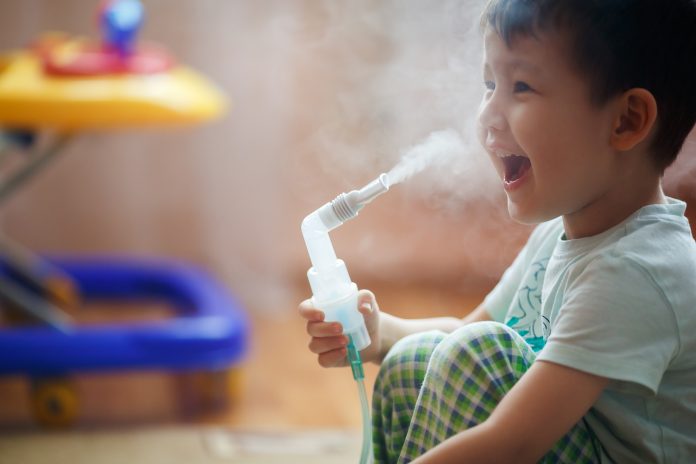
There is nothing more distressing than the sight of your little one struggling to breathe during an asthma attack. The relatively small airways in children makes asthma attacks during childhood more common than in adulthood.
The good news is that with proper attention your child’s asthma can be managed, allowing them to enjoy a normal lifestyle. Here’s all what you need to know about childhood asthma.
It’s possible for an asthma attack to occur for no apparent reason, but there are also some common triggers that can set off an incident. Understanding what they are can help you reduce your child’s exposure.
One of the most common causes for childhood asthma is environmental factors. Pollen can irritate the airways, while strong scents and odours can have a similar effect. Even dust and talcum powder can be problematic. As much as possible you should try to keep your little one away from these airborne particles.
Stress can be another trigger of childhood asthma but, perhaps surprisingly, so can happiness. “Hormones play a strong role in triggering asthma attacks, and that includes hormones from happiness,” explains Dr Anjanette O Reyes-De Leon, Pediatrician and Asthma & Lung Specialist.
Does that mean you should stop your child enjoying themselves? Of course not! Just be aware that particularly exciting events, such as birthday parties, might increase the chances of an attack and be prepared accordingly.
Exercise can also bring on a dry cough which leads to an attack. But again, that’s no excuse to not let your child run around: you just need to make sure you take the proper precautions. “Once we’ve established that a child has asthma, then we give medication like bronchodilators so they can play as usual,” says Dr. Anjanette.
Changes in temperature can also be a trigger for childhood asthma. While you may not be able to control the weather, you can at least be alert to the sudden change when you walk from the hot street into an air conditioned building. “I usually advise my patients to take some time to acclimatise,” advises Dr. Anjanette. “So stay by the door until you feel comfortable, then move inside.”
Despite your best efforts, sometimes it’s impossible to avoid all the triggers and an asthma attack. If you learn to recognise the warning signs you can lessen its severity – and may even be able to prevent a full-blown asthma attack in the first place.
Initial symptoms include a dry cough, particularly in the morning or night, and difficulty breathing. If you notice this in your child, try to take them away from any triggers such as pollution or strong odours. You can also give them their inhaler or nebuliser as prescribed by your doctor. This may help prevent an asthma attack before it occurs.
If your child is having an asthma attack, the most important thing you can do is to keep calm. You need to settle your little one so he or she can breathe properly, and you won’t be able to do that if you are panicked yourself.
Sit them down if needed, but make sure they stay upright so that their medication can be inhaled properly. Loosen their clothes so that they are comfortable and there are no restrictions around the neck.
Give their medication as prescribed by your doctor and remember to keep soothing them. “If the child is crying the airways are closed and they cannot inhale as much of the medication,” explains Dr. Anjanette.
That should be sufficient to ease the attack but remember, if the medication doesn’t help, the lips turn blue or your child loses consciousness, then you should call an ambulance immediately.
Also read: Asthma Nebulizers and Inhalers: What helps you breathe easy?
|
Previous article Can your Allergies cause Asthma? |
Next article 8 Habits that can Help you Prevent Chronic Lung Diseases |